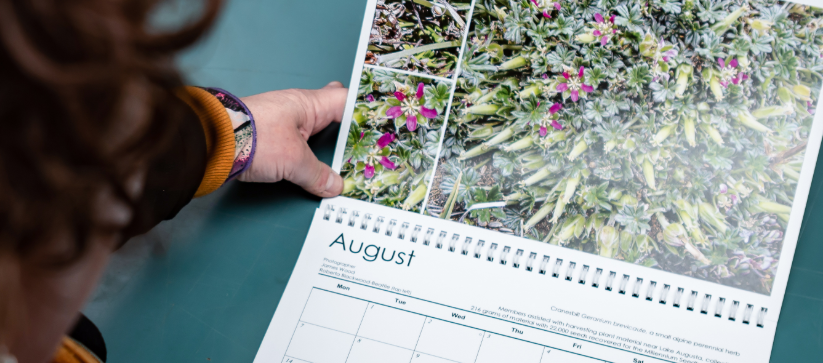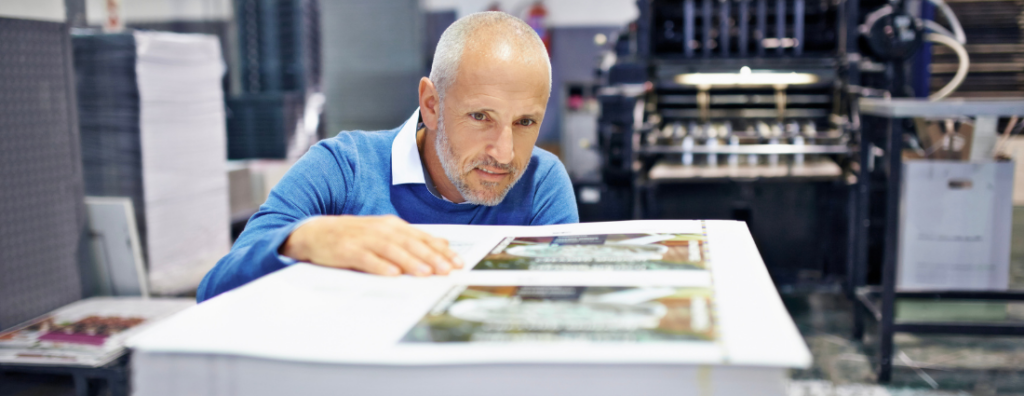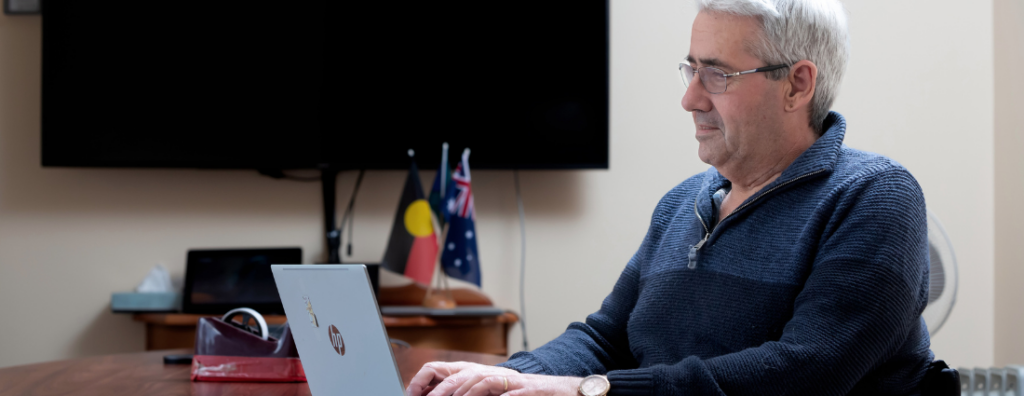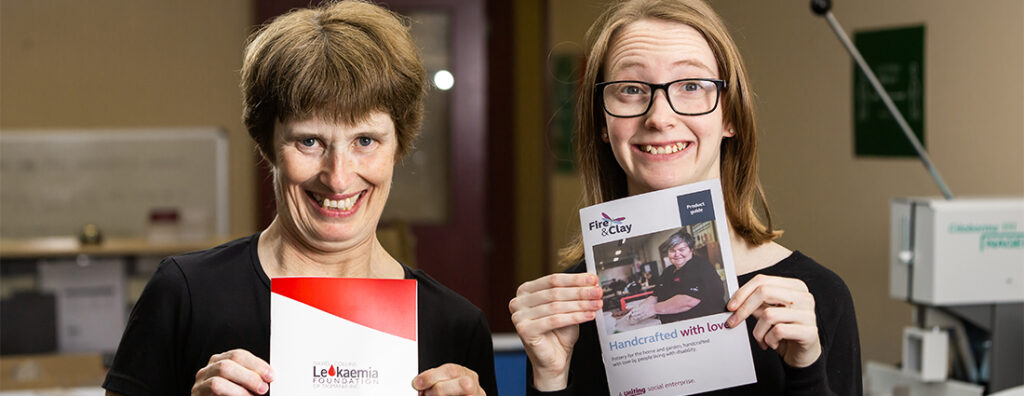Companies increasingly look for ways to align their operations with social impact goals. One of the most effective ways to do this …
Cart.
A guide to binding methods: Wire bound, stapled, and perfect binding
Published
October 30, 2023

When it comes to presenting printed materials, choosing the right binding method can significantly impact the overall look, feel, and functionality of your documents.
Three popular binding options are wire binding, stapled binding, and perfect binding. Here we’ll compare these to help you make an informed choice.
1. Wire binding
Wire binding, also known as coil binding, is a versatile option commonly used for notebooks, reports, and manuals.
- Flexibility: One of the primary advantages of wire binding is its ability to lie flat when opened, making it an excellent choice for documents that need to be easily read and written on.
- Durability: Wire binding is highly durable, with the metal or plastic coils ensuring that pages are securely held together, even with frequent use.
- 360-degree page rotation: With wire binding, pages can be rotated 360 degrees, allowing for easy note-taking and comfortable reading.
- Customisable: You can choose from various coil colours and sizes to customize the look of your document.
2. Stapled Binding:
Stapled binding, also known as saddle stitching, is a common and cost-effective option for booklets, brochures, and magazines.
- Simplicity and affordability: Stapled binding is a straightforward and budget-friendly option for small to medium-sized publications.
- Professional appearance: Despite its simplicity, stapled binding provides a clean and professional appearance, making it suitable for a wide range of materials.
- Page limitations: Stapled binding is best suited for documents with a limited number of pages (up to 64 pages), as thicker documents may not lay flat and can be challenging to staple. The total number of pages needs to be a multiple of four for the stapling to work correctly.
3. Perfect Binding:
Perfect binding is a sophisticated method often used for paperback books, catalogues, and thicker magazines. Pages are glued together then wrapped to make a spine that forms part of the cover of the book.
- Elegant Finish: Perfect binding creates a polished and professional appearance with a square spine, making it an excellent choice for products you want to showcase.
- Versatility: It accommodates a wide range of page counts, making it suitable for thicker documents that stapled binding cannot handle.
- Flat Spine: The flat spine of perfect-bound documents is ideal for printing titles and logos, enhancing the overall presentation.
- Durability: While not as durable as spiral binding, perfect binding is still robust and suitable for materials that will be handled gently.
Choosing the Right Binding Method:
The choice between wire, stapled, and perfect binding depends on your specific project requirements. Consider the following factors:
- Document Type: What kind of material are you producing? Notebooks, reports, and manuals are often best suited for wire binding, while brochures, booklets and magazines may work well with stapled binding. Perfect binding is typically reserved for paperback books and catalogues.
- Page Count: The number of pages in your document is a critical factor. Wire binding is ideal for smaller documents, while perfect binding can handle thicker publications.
- Budget: Consider your budget, as each binding method comes with its own cost implications.
- Appearance: Think about the desired presentation and aesthetics of your document. If you want a professional, polished look, perfect binding might be the way to go.
The choice between wire, stapled, and perfect binding ultimately depends on your project’s specific needs, budget, and desired presentation. Each method offers unique benefits, so carefully evaluate your requirements to select the binding method that best suits your goals.
Related News
Celebrating Tadpac Print’s certification as a social enterprise with Social Traders.
At Tadpac, we are proud to announce that we’ve achieved certification as a social enterprise through Social Traders. This recognition affirms our …
Choosing green: Tadpac’s commitment to environmentally friendly toner.
Sustainability is a top priority for us at Tadpac, and one way we are reducing our environmental footprint is by using Konica …
Game, set, print: How one match led to a lifelong career.
It was a single game of table tennis – a sport Bruce both didn’t enjoy nor claimed to be any good at …
Setting up your pull-up banner: a step-by-step guide.
If you’re looking for a portable way to market your business or announce your presence, a pull-up banner is a convenient and …
Exploring the world of paper types: uncoated, recycled, silk, and cast coat.
When it comes to selecting paper for your printing projects, the choices can be overwhelming. Each paper type has unique characteristics, making …





